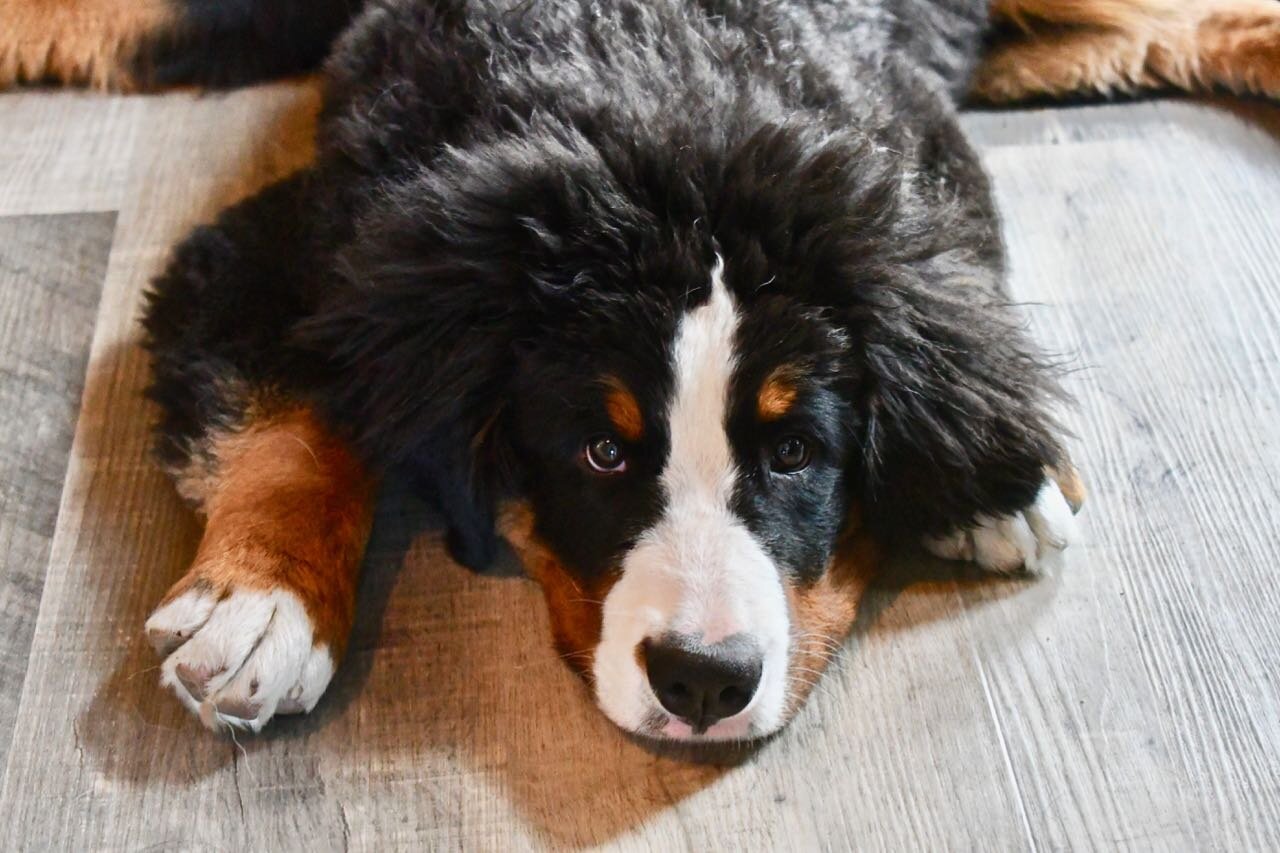A period of Stranger Anxiety in human babies is normal. Yes, it can hurt feelings and embarrass parents when the baby is shrieking like a teakettle because Grandma wants to say hello but there it is — biology is powerful.
Puppies can go through something very similar. Friendly and happy can turn to suspicion almost overnight, as if a switch was turned while everyone was sleeping.
Humans, eager to share their so-cute puppy, may well miss or ignore the signs of Stranger Danger and fail to protect the puppy from the forwardness of well-intentioned strangers. Worse, humans may think the puppy should be forced to interact with scary people so she can “get over” it.
So the first thing to keep in mind is that young mammals can indeed have normal development that includes Stranger Danger. The second thing to remember is that a Berner, according to the Breed Standard, “…may remain aloof to the attentions of strangers.”
A Berner puppy that prefers not to engage with strangers — and shows this by not engaging with said stranger — is being aloof with strangers. S/he may also be reflecting the normal developmental process of Stranger Danger, which is actually a process of awareness/discernment — a good thing.
Three generations: Claire, Capella, Sparkle
All that is to offer reassurance that a puppy who doesn’t love everyone is okay; it is not a problem to be fixed. AND we want a puppy who is confident and not shy — so how do we proceed? Here are some thoughts…
Forcing a puppy to interact is a TERRIBLE IDEA. If you want to create a shy puppy — do that. Force doesn’t mean holding the puppy down and allowing Auntie Susie to pet the puppy — force can be much more benign. Just remember — no means no, even in a puppy.
Confidence comes from mastery. Let the puppy master strangers one puppy step at a time. If the puppy doesn’t want to interact but is fine in the stranger’s presence — Yay! Reward that with YES (or click) and a cookie.
Puppy looks at the stranger — YES (or click) and cookie.
Puppy sniffs person — YES (or click) and cookie.
I like to teach a reliable hand touch — puppy bonks your hand and gets a Yes/Click and cookie; this can be transferred to a stranger when the puppy is comfortable. Person holds out hand and puppy bonks — and gets a cookie from you or if comfortable, from the stranger.
The goal is a puppy that is comfortable and relaxed around new people — that happens when a puppy is not terrorized by the new people, and remember: the puppy is the one who gets to decide what and who feels terrorizing.
Barking at a stranger says, “too much, too soon” in puppy language. S/he needs to be removed to a distance that feels safe. The build up to Stranger Mastery starts at the place that feels comfortable for the puppy.
Training the puppy is the easy part — it is managing other humans that can be tough.
If a puppy is concerned about a person, that person needs to completely ignore the puppy — no looking at the puppy, no talking to the puppy, no feeding the puppy, no petting the puppy — just ignore the puppy. All of those things — looking, talking, feeding, petting — are steps; doing them all at once constitutes flooding for a concerned puppy, and flooding is a Terrible Idea.
Bottom Line: Stranger Danger happens. It is a normal thing. Berners do not always love everyone — that is okay. Don’t let anyone force attention on your puppy. Start from a place of safety and work on having a relaxed puppy around strangers by reinforcing desired behavior.
If a puppy barks or tries to get away — you blew it. Not a huge deal — just info so you can do better next time. We are, after all, only human.



